Back in May of 2015, a bit less than 6 years ago, I realized that there weren’t any good and practical charger for PP3 batteries (commonly known as 9V batteries), all of the products on the market are either those horrible wall chargers straight from the cheapest Chinese factories, more up-market models that either assumes the type of NiMH battery you’ll insert or just try to recharge them to the highest voltage possible with a lot of current limiting, or professional chargers aimed at the hobby market. None of these solutions worked for me. They ranged from “I would never trust to leave this charging while I sleep” to “that’s way too much hassle”, so I’ve decided that I could do better.
The first problem that we have to overcome is the fact that there are way too many different “9V” rechargeable batteries on the market. They all look exactly the same (of course), but their voltages greatly differ. Most of them are of the NiMH variety, but more recently lithium alternatives have come to market, although I haven’t had the chance to buy one to try out yet, I still prefer my good old NiMHs. So let’s look at what’s out on the market right now:
- NiMH 7.2V (6 NiMH cells in series): These are quite old, and very rare these days. I guess it was the best way to get a relatively high capacity battery for more demanding applications back when they were introduced, but this came at the cost of having a very low nominal voltage, although most 9V appliances wouldn’t have any problems with this.
- Li-Ion 7.4V (2 Li-Ion cells in series): The latest and probably the last version we’ll see of the 9V battery, sporting an amazing capacity thanks to that lithium magic, but suffers from a low nominal voltage, which as discussed previously might not be a big problem after all. The only issue I have with these is that I still don’t trust lithium to be left unattended discharging away in a device that might take the cells to quite low levels. NiMH cells are a lot easier to “heal” after they have been abused or neglected.
- NiMH 8.4V (7 NiMH cells in series): The most popular type of rechargeable 9V battery. These strike a good balance between nominal voltage and capacity and are my preferred choice. Usually, if a battery isn’t labeled it’s almost a given that it’s an 8.4V model.
- NiMH 9.6V (8 NiMH cells in series): If you need a pretty high nominal voltage and don’t care a lot about capacity this type is the way to go, just be mindful that most 9V hardware will gladly over-discharge them and ruin your day, so always keep an eye on their voltage from time to time.
As you can clearly see there are quite a lot of battery types out there (and some of them aren’t even marked!), so our charger must be able to handle them all, preferably without trying to be dumb smart and detecting the battery voltage. The user should be able to manually select the type of battery that they are inserting, but the software of the charger can also apply the classic dV/dt algorithm to determine when to terminate the charge if the user is unsure about the type of battery they got.
Since back then I just wanted to make something quick and only for me, I’ve designed a simple PIC12F683-based charger with a basic buffered op-amp linear CV/CC voltage regulator that fits inside an Altoids tin together with the battery that it was charging. This was a pretty neat solution, it would have a nice enclosure, I could have multiple charging a bunch of my batteries at the same time, and was very easy to write the code for. This was the schematic and board that I came up with:
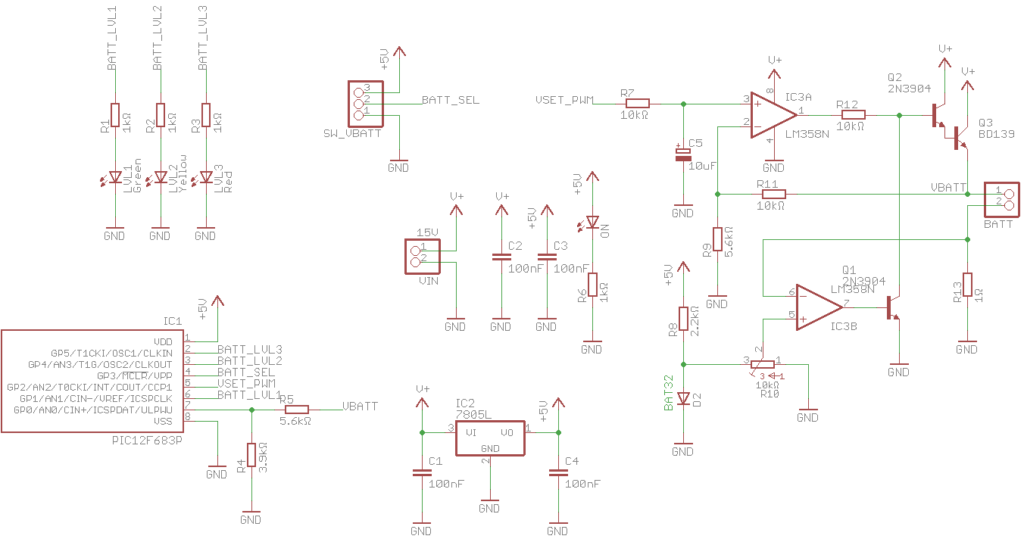
If you want to know more the GitHub repository is still up, but as you can see it’s a pretty simple board, and unfortunately due to size limitations it only was able to charge 8.4V and 9.6V batteries, which were most of my batteries back then, the charging current adjustment was manual with a potentiometer, and it required 15V to work. This was far from optimal, but I was in a hurry and it would perfectly fit my needs back then. Unfortunately because of the rise of the USD value and my lack of interest in the project I’ve never manufactured this board, and just continued charging my batteries with my lab power supply.
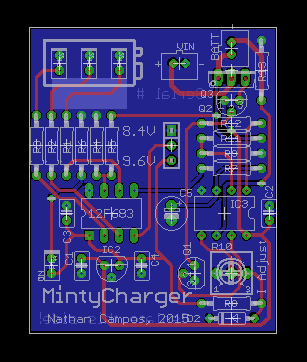
Last year, while I was developing the Bipolary project, I was reminded of this long-forgotten project and decided to revisit it, use the knowledge that I’ve accumulated in the last 6 years, and redesign it completely from the ground up! Here are some of the features that I intend to implement in this new version:
- 5V USB power: Wall warts no longer an option, these days USB is the standard power outlet for almost everything. This also means I’ll have to use a switch-mode converter.
- Capable of charging every single 9V battery out there: If I’m going to do this right, I’m going to support everything, even the lithium ones.
- Neat design: Since I plan on selling these they must have a nice design and be easy to use.
- Refresh batteries: Since these batteries usually live quite a hard life, and are constantly over-discharged, I think having a way to automatically try to bring them back to life is very important.
These were my goals when I’ve designed the circuit of this new version. Here’s a sneak peek:
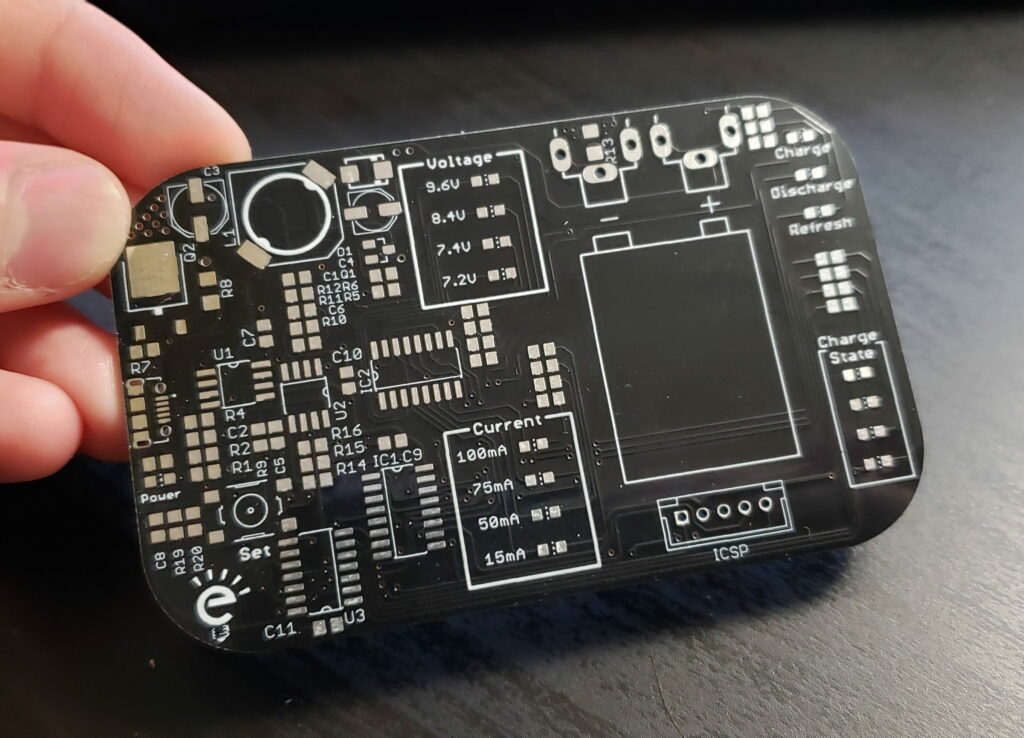
Manufactured PCB 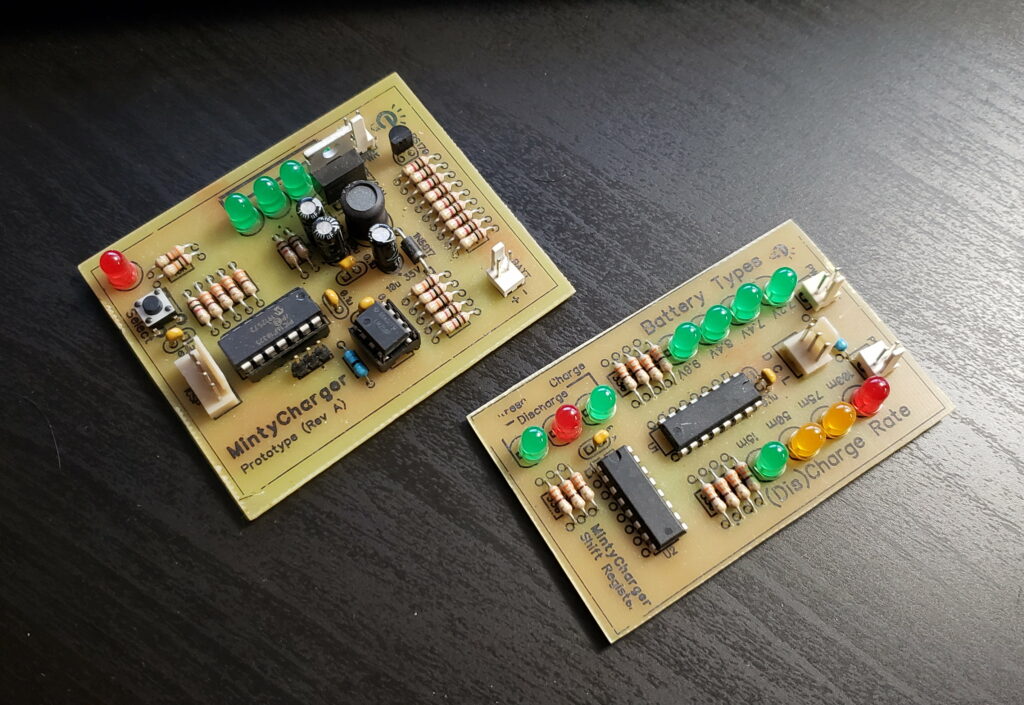
Homemade Prototypes
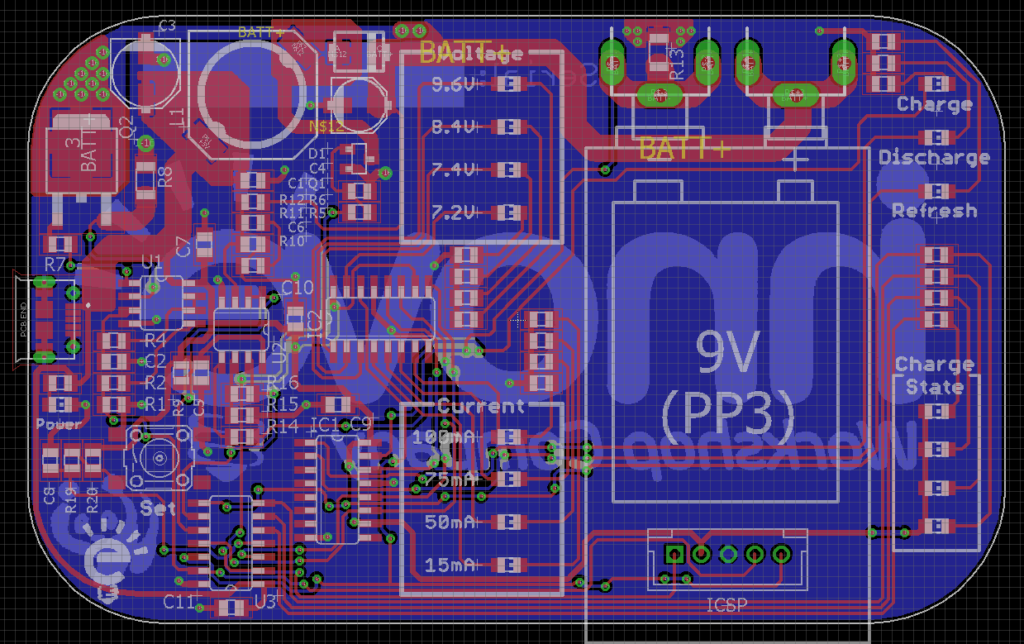
PCB Layout
Due to a whole bunch of reasons I’m only coming around to work on this project now, but I promise I’ll try my best to finish it quickly this time. I hope to post updates on it here pretty soon!